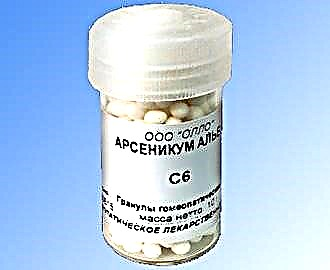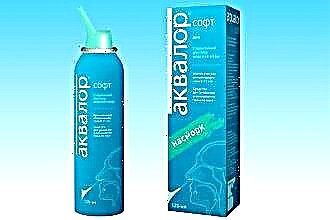Why is homeopathy for sinusitis as an alternative method of treatment constantly in the field of vision not only of people suffering from this disease, but also of doctors? The point is that existing antibiotic or puncture treatments leave a lot of questions that homeopathy could answer. True, a lot of questions have accumulated about homeopathy itself in the treatment of sinusitis.
General principles of homeopathy
 The principles of homeopathy were formulated in the late 18th and early 19th centuries and have remained unchanged since then: treating a disease with negligible doses of a substance similar to the substance that caused the disease. Over the past centuries, homeopathy, which has become an alternative direction of medicine, has been divided into a number of currents (schools):
The principles of homeopathy were formulated in the late 18th and early 19th centuries and have remained unchanged since then: treating a disease with negligible doses of a substance similar to the substance that caused the disease. Over the past centuries, homeopathy, which has become an alternative direction of medicine, has been divided into a number of currents (schools):
- classic,
- ultra-high dilution homeopathy,
- phyto-homeopathy and others.
There are also narrower areas, up to the refusal of the school from some basic principles (for example, treating like like like) while maintaining others (using the effect of high and ultra-high dilution). Sometimes researchers and therapists working in a similar direction, remaining in the context of the homeopathic idea, generally “deny” their involvement in homeopathy, criticizing both its form and content.
In particular, the most reasoned claims to homeopathic remedies are the following:
- "After" does not mean "due" yet. The curve of the graph of the course of any disease, as a rule, indicates the deterioration and improvement of the patient's condition, not depending on the intake of drugs. The fact that after taking any remedy the patient's condition improved does not mean that this improvement was due to the remedy.
- For the last 200 years in homeopathy, decimal (denoted by the Roman numeral X or the letter D) and centesimal (Roman numeral C) dilutions have been adopted - standard concentrations of the active substance in a certain range from C3 to C200 and more. For example, marking C12 in the instructions means that a centesimal dilution was made, repeated 12 times (1:1024). It is this concentration (more precisely, 11.89 C) that still allows you to save at least one molecule of the active substance in the finished product. Going beyond 1:1024 in dilution, it says that not a single molecule of the active substance was left there, and, therefore, the agent with a dilution of more than C12, in principle, cannot act even theoretically (according to the ideas of science about the nature of things).
- An attempt to explain the potential effectiveness of dilutions exceeding C12 by "water memory" has not been supported by any scientific studies. On the contrary, the rate of mixing of water bonds (we are talking about quadrillion fractions of a second) indicates the absence of the possibility of the formation of any information clusters.
From the above it follows that if we talk about the treatment (not only of sinusitis, but also of other diseases) with the help of homeopathy, then we can only talk about dilutions up to C12 / 1: 1024 (in practice - up to 10-17 M). And studies of such concentrations exist (in Russia, they initiated the publication of 1977). In particular, EB Burlakova, Professor, Doctor of Biological Sciences and Deputy Director of the Institute of Biochemical Physics, was engaged in ultra-low doses. In the works of the scientist, there are both echoes with classical homeopathy and opposition to it.
Ultra-low doses in relation to the treatment of sinusitis
According to E. Burlakova's laboratory, the effect of ultra-low doses, if we talk about concentrations up to 10-17 M, - is confirmed. It is explained by various hypotheses. For instance:
- breeding 10-12-10-13 M explains biological activity by the interaction of a substance with receptors;
- breeding 10-15-10-20 M fits into the hypothesis of parametric resonance, in which a molecule of a substance hitting the cell triggers the mechanism of restructuring the cell membrane.
Moreover, the effectiveness of such drugs of the "homeopathic type" is described by a "two-humped curve" - a graph on which there are peaks of effectiveness (called "Benveniste peaks"), and dips in which activity is not observed. Sometimes, in the zones of dips on the graph, the activity of a substance even changes its sign to the opposite. For example, if, when diluting C3 and C6, the drug demonstrates a therapeutic effect, then when diluting C4, the effect may be absent, and when diluting C5, it can produce an effect opposite to the therapeutic one.
A similar "peak" dependence is also known in classical homeopathy - a certain "step" is also observed there. But this step was determined by Hahnemann and his disciples almost 200 years ago and needs serious adjustment, since the real position of the Benveniste peaks is determined by many conditions. In particular, there is the effect of overlapping peak activity graphs, when one concentration of a substance gives a peak of effectiveness in the treatment of one disease, and another concentration of the same substance outside the "homeopathic step" gives a peak of effectiveness in the treatment of a completely different disease.
Unfortunately, there is no data on what substance and in what concentration (within the framework of laboratory experiments) is necessary for the treatment of sinusitis. And the process of independent practical selection is fraught with mistakes, since if the substance is in any way toxic, then in addition to the therapeutic effect at ultra-low doses, the effect of the toxin also increases at the peaks. For the treatment of sinusitis, this specificity is especially relevant, since arsenic, belladonna, and mercury are often used in the funds. How much it will be possible to take into account all the "pitfalls" in the manufacture of a homeopathic remedy depends on the technical capabilities and knowledge of the homeopath or researcher scientifically involved in the effect of ultra-low doses.
Homeopathic remedies for inflammation of the maxillary sinuses
Basic homeopathic ingredients
 Arsenicum - arsenic... In homeopathy for sinusitis in adults, it is prescribed in cases where the disease manifests itself as burning throbbing pain in the maxillary sinuses. Such pain can increase under the influence of external factors: annoying noise, light, movement, giving in to the upper jaw and manifesting itself there as a toothache.
Arsenicum - arsenic... In homeopathy for sinusitis in adults, it is prescribed in cases where the disease manifests itself as burning throbbing pain in the maxillary sinuses. Such pain can increase under the influence of external factors: annoying noise, light, movement, giving in to the upper jaw and manifesting itself there as a toothache.- Belladonna... It is used for conditions associated with pressing heaviness, a feeling of overcrowding in the sinuses. The pain can radiate to the area of the eye sockets or eyebrows and intensify with movement of the head and, especially, with a sharp bend forward.
- Sulfur... The substance is also known as Hahnemann's calcium sulfide (sulfuric liver). It is prescribed for sinusitis, which develop as a reaction to hypothermia. They are characterized by a discharge of thick pus. It is also discharged in cases where sinusitis causes headaches that worsen even with minor movements.
- Potassium dichromate... Its use is practiced with profuse purulent discharge with a thick consistency, accompanied by pain in the sinus area.
- Mercury - mercury... Used in remedies for offensive greenish nasal discharge. At the same time, the headache has a constricting character, and the nose is sensitive to touch.
- Lumbago... A herb from the buttercup family with its own legend. As a homeopathic substance, it is prescribed for sinusitis, which has arisen in response to overheating. The headache accompanying this inflammation is worse in a warm room and ameliorated in the cold. Thick nasal discharge is yellowish.
Composite preparations with homeopathic dilution of individual components
Cinnabsin... The complex contains 4 active substances with dilutions that do not reach the values used in classical homeopathy.However, they are large enough to qualify as a homeopathic remedy. The components contribute to the liquefaction and removal of secretions from the maxillary sinuses.
In the chronic course of the disease, adults take one tablet three times a day.
Sometimes they practice the scheme "tied to nutrition": half an hour before meals and after the same amount of time after, half a tablet is absorbed. With an exacerbation of the disease, tablets are taken every hour until clinical improvement.
Euphorbium compositum (Nazentropfen C) from Heel. This German company has been producing homeopathic remedies since 1936 and has long enjoyed a reputation among homeopaths. This product contains 8 ingredients:
- milkweed juice (euphorbium),
- mercury,
- silver nitrate,
- hepar sulfuris, etc.
Special attention should be paid to the mixture of toxins taken as a result of the inflammatory process in the sinuses - sinusitis-nosode. In this case, both homeopathic principles are fully observed: treatment of like with like and ultra-low dosage. The medicine is instilled (injected) into the nose 3-5 times a day, one or two "portions".
Delufen... Homeopathic remedy of the Austrian company, consisting of 5 ingredients: mercurius in a concentration of 1:10-12, lumbago, luffa, euphorbium. It is injected into the nose four times a day for 1-4 weeks.
Antibiotics or homeopathy for sinusitis
Viruses, bacteria, fungal infections can become the cause of infectious sinusitis. In the case of viral and fungal sinusitis, antibiotics are not only useless, but also potentially harmful. However, bacterial sinusitis cannot be treated with anything other than antibiotics. And it is indicative that in all the recommendations for anti-sinusitis homeopathic therapy, bacterial sinusitis is "taken out of the brackets." That is, the treatment of sinusitis with homeopathy is allowed only with the viral form of the disease. Sometimes this rule sounds accompanied by a commentary on the admissibility of using a homeopathic remedy at the stage of a purulent form, but in combination with traditional remedies - antibiotics.
 The effectiveness of various antibiotics in bacterial forms of sinusitis differs markedly, but additional "corrections" to these indications can also be made by individual characteristics of the perception of drug treatment - different people have different susceptibility to drugs. An approximate first-time efficacy rating for antibiotics is as follows:
The effectiveness of various antibiotics in bacterial forms of sinusitis differs markedly, but additional "corrections" to these indications can also be made by individual characteristics of the perception of drug treatment - different people have different susceptibility to drugs. An approximate first-time efficacy rating for antibiotics is as follows:
- More than 90% efficiency in moxifloxacin, levofloxacin, amoxicillin.
- About 80-90% - in cefpodoxime proxetil, cefixime, trimethoprim-sulfamethoxazole, as well as in high doses - in amoxicillin.
- Up to 80% - in cefprozil, clindamycin, doxycycline, azithromycin, erythromycin and clarithromycin.
- Cefaclor has the lowest efficiency - up to 60%.
The paradox is that people often turn to homeopathy precisely in order to avoid treatment with antibiotics, which, with prolonged use, can provoke the development of a fungal infection. In addition, the frequent use of antibacterial agents contributes to the emergence of drug-resistant mutant bacteria. And the antibiotic itself, in case of blockage of the paranasal sinuses, has to be delivered to the maxillary sinus using a puncture.
However, with all these disadvantages of antibiotic therapy, homeopathy for sinusitis in a bacterial form cannot be considered an alternative method of treatment.

 Arsenicum - arsenic... In homeopathy for sinusitis in adults, it is prescribed in cases where the disease manifests itself as burning throbbing pain in the maxillary sinuses. Such pain can increase under the influence of external factors: annoying noise, light, movement, giving in to the upper jaw and manifesting itself there as a toothache.
Arsenicum - arsenic... In homeopathy for sinusitis in adults, it is prescribed in cases where the disease manifests itself as burning throbbing pain in the maxillary sinuses. Such pain can increase under the influence of external factors: annoying noise, light, movement, giving in to the upper jaw and manifesting itself there as a toothache.

